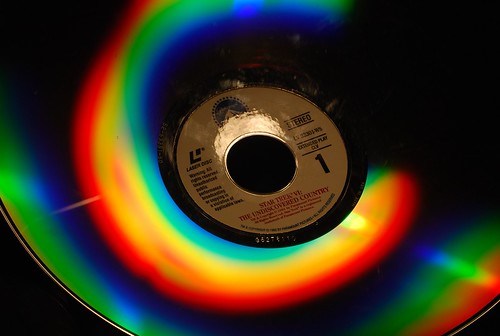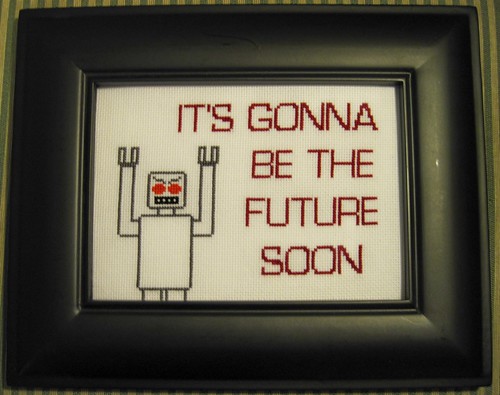As a consumer market fails to embrace Blu-Ray and audiovisual options become more complex, if only we had Devo and Ray Charles to guide us through our purchasing decisions. (Alternatively, we could have the folks at Best Buy dress up in Devo’s creepy eyeball masks, but maybe that’s cruel.)
Devo Demonstrates LaserDisc – 1984 [Retro Thing]
Watching the video, aside from waves of nostalgia, you may mutter to yourself, “you know, Devo have a point.” Fidelity was substantially better on LaserDisc. Recently, on the audio side, audiophiles have lamented the slow forward (or arguably backward) progress of sound. In a rant in May, I played devil’s advocate, to say that some of the evidence they cited was shaky, and, indeed, that part of the issue was that consumers have rarely made fidelity their main variable, back to when consumers helped launch the mobile revolution by buying really horrible transistor radios.
Far from being an outmoded joke, though, I think LaserDisc here appears simply ahead of its time. From the successful launch of DVDs to a push for higher-quality high-definition video everywhere from online streams to Xboxes to movie theaters, LaserDisc was already in 1984 closer to today’s reality than anything on the market.
LaserDisc also had other roles in history. It was the format that helped launch superb Criterion Edition videos. The discs, while enormous, continue to stand the test of time. And back in the days when development environments like Max couldn’t yet rely on computers for video playback, serial control of LaserDisc was essential to provide the first interactive video and video performance – a legacy to which we’re indebted today.
No, to me, what’s astounding is, as always, the pace of history. Popular culture now assumes technological progress is immediate: tech is invented, immediately scaled to consumer production, and we all have it. Technology like LaserDisc demonstrate this simply ain’t so. LaserDisc debuted on the market – not in a lab, in an actual product – in 1978, as Discovision. (As it happens, I also debuted in 1978, though I’ll let you debate whether I’m ahead of my time, overpriced, or destined to become an obscure format.)
Is 2010 different? I’m not sure. Basic problems like how to deliver television programming to your homes still seem to baffle the industry, which is caught up in antiquated regulation and old-media conglomerates. New technologies like augmented reality, multi-touch, and gestural input are rising in availability, but the actual widespread application of them is murky. (Before you say the iPhone has popularized multi-touch, consider this: people are still only beginning to wrap their heads around pinch zoom, and most UIs don’t have widespread multi-touch interactions.)
When Douglas Adams wrote The Hitchhikers’ Guide to the Galaxy in 1978 (there’s that year again), he described humanity as:
“ape-descended life forms [who] are so amazingly primitive that they still think digital watches are a pretty neat idea.”
In 2010, we’ve gotten over the digital watch, I think, but we’re impressed by putting on 3D glasses, achieving stereoscopic effects available at the turn of the last century. (I listened to an amusing, breathless exchange on YES Network, the TV network here in New York that covers Yankees baseball. “3D … can you believe it?” mused the sportscasters. Uh… okay.)
My own family, for their part, has decided not to discard their LaserDisc player as they move to Florida. I’ll have to think of what its use might be, or if I can argue some claim to it. I do have fond memories of watching The Abyss, Criterion’s Doctor Strangelove (in stunning black and white), and The Mind’s Eye in our basement, the first experience I ever had with digital high-quality video, and even getting up to flip the discs. Ed.: As noted in comments, the signal is technically analog, though it’s encoded physically in the disc in the same way a CD or DVD is – a bit like a video record.
Anyway, all of this is to say, if you do love technology and its forward pace, you’re likely to be a fan of history, too. Not all the news is on the blogs. Some is a blast from the past.


